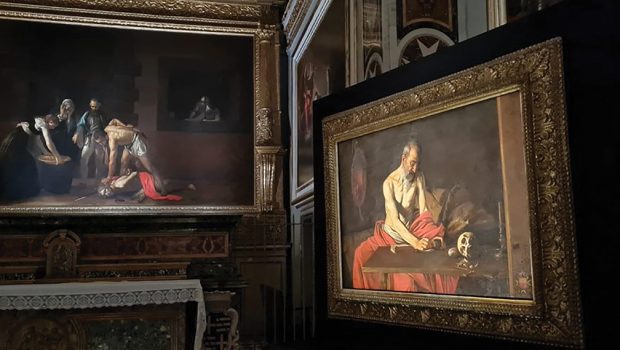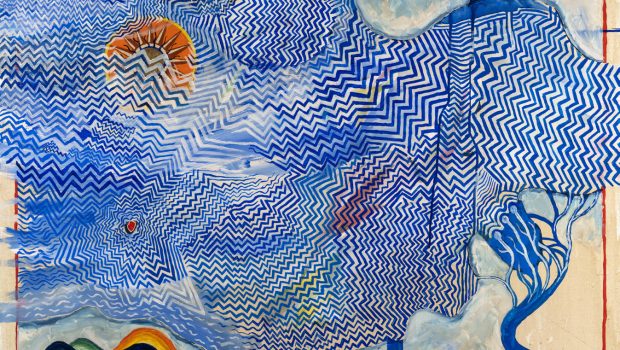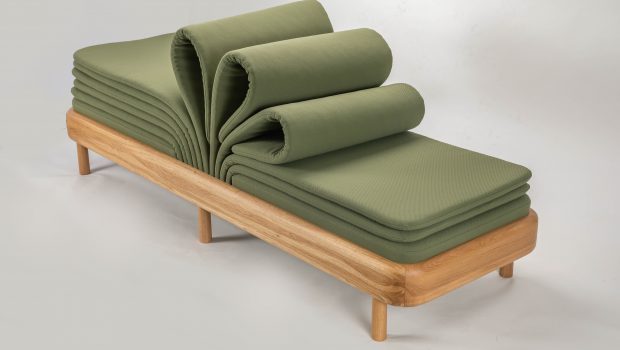Art, Community & Traffic
Community-led art with Raffaella Zammit.
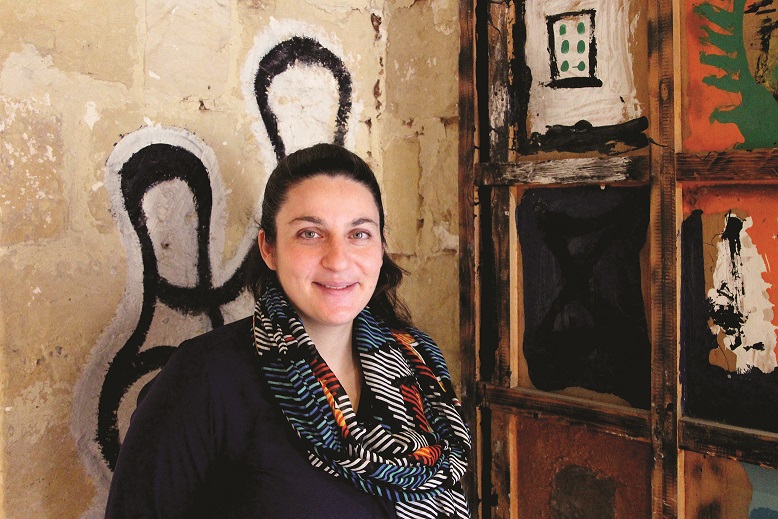
Raffaella Zammit © Emma Fsadni
The Maltese artist Gabriel Caruana (1929-2018), was never a fan of conventional white-walled gallery spaces and strongly believed in involving the local community in his creative endeavours. His daughter, Raffaella Zammit, continues this philosophy in his absence.
I meet Raffaella at The Mill. The building is an eighteenth-century former flour mill found in the busy town of Birkirkara, now home to the Gabriel Caruana Foundation. Raffaella is seated on a chair painted by her father, who saw a canvas in everything. She studied Geography at the University of Malta and worked with the planning authority for 10 years, but her father’s ill health drew her to The Mill in 2012.
The Gabriel Caruana Foundation believes in making contemporary art and creativity as accessible as possible
Raffaella explains, “my dad had wanted to establish a contemporary art centre for a long time,” and upon his retirement, in 1989, he began the hunt for an ideal space. In 1990, he had the opportunity to take over The Mill, which he managed together with his wife, Mary Rose Caruana. Raffaella tells me, “he would invite other artists to exhibit,” be it students of his, or important international names such as Eva Lange, Emilio Vedova, Silvio Cattani, Mario Tosini and Gastone Primon. While The Mill is entering its 30th year in operation, the Gabriel Caruana Foundation was only formally established in 2016.
Raffaella underlines that “this is not about having an organisation that promotes Gabriel Caruana. Rather it promotes his legacy, his contribution to art while supporting different artists and engaging people”. Ultimately the foundation believes in “making contemporary art and creativity as accessible as possible”.
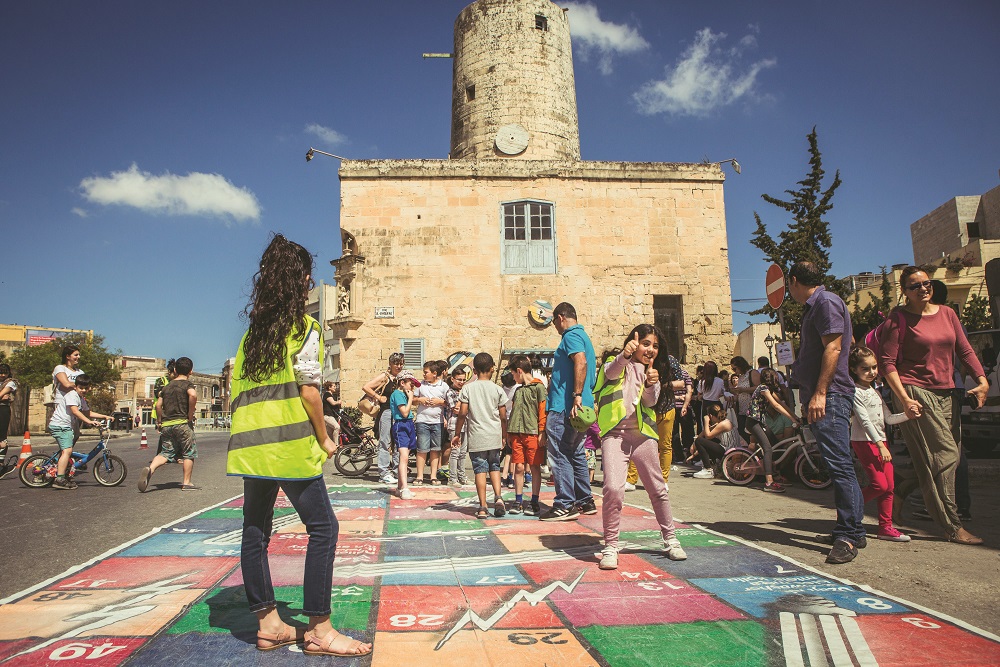
The centuries-old walls of The Mill fail to drown out the noise from the road outside. The space is adjacent to the busy thoroughfare of Naxxar Road. As Raffaella points out, “traffic never stops here. From seven in the morning until around eight at night, there are cars”. In fact, our conversation is constantly interrupted by the sounds of honking and loud cars as the traffic whizzes past. Between the cars driving and cars parked, very little room is left for the pedestrian to walk comfortably, and, it was precisely this, walking, that was the trigger for the project titled Nimxu Mixja, developed in collaboration with Kristina Borg.
The project – which received Kreattiv funding – began with an online exchange between the two women about walking and Malta’s car-dependency. Raffaella explains, “using cars basically reduces the time spent in your community, spent in your area and in being aware of what’s changing in your locality”. Together with Kristina, she engaged with St Theresa College, the Birkirkara primary school, to bring 100 children on walks around the locality. Nimxu Mixja invited the children to observe their surroundings and introduced them to walking as an artistic practice. Divided by classes, of 25 students, she explains, “one of the most important elements of the project was to be aware. Being aware of the sounds, what you’re touching, what you’re smelling. These were all important for the process”.
Back in the classroom, the 10-year-olds, were asked to record their thoughts through journals, map-making, slogan-writing and poetry facilitated by Miriam Calleja. Common themes emerged – “the majority of children want less cars, less litter, less construction noise. They want more areas where they can walk and cycle. And the incredible thing is, they weren’t prompted”. The children, not old enough to use a car, felt robbed of the space to be themselves. One child simply wrote: ‘stop with the cars’.
The project culminated in an exhibition at The Mill of the children’s work and a final community walk that saw the busy Naxxar Road closed to traffic. Leaving from the school, Raffaella describes the joy the children felt as they reached the nearby pizzeria, with The Mill in sight, they ran towards the building. They were finally in ownership of the road. It was a space for them, Raffaella says – “it was a walking street party”.
Most of the foundation’s projects aim to create community-led art. Its most recent project Ħożż il-Ħsejjes, engages with themes of tangible and intangible culture. A collaborative effort between Raffaella Zammit, Elyse Tonna, Wen Chin Fu (of the Instrument Inventors Initiative), Marvin Zammit (of Mighty Box), and Andrea Pullicino, participants were asked to create vessels of sound using clay and wheat. The materials closely tied with the history of The Mill, its original use and its recent connection with Gabriel Caruana. The series of workshops aimed to “get people to The Mill, work with a concept, materials and develop something together”.
The conversation turns to the future of The Mill and the Gabriel Caruana Foundation. Being on the cusp of the 30-year anniversary doesn’t stop Raffaella from explaining how the Foundation “would like to reach 40 years, if everything goes to plan”. Undeterred by possible obstacles, her father’s encouraging words ring in her ears” “jekk taqa, qum u għamilha parti miż-żifna” (if you fall, stand up and make it part of the dance).

